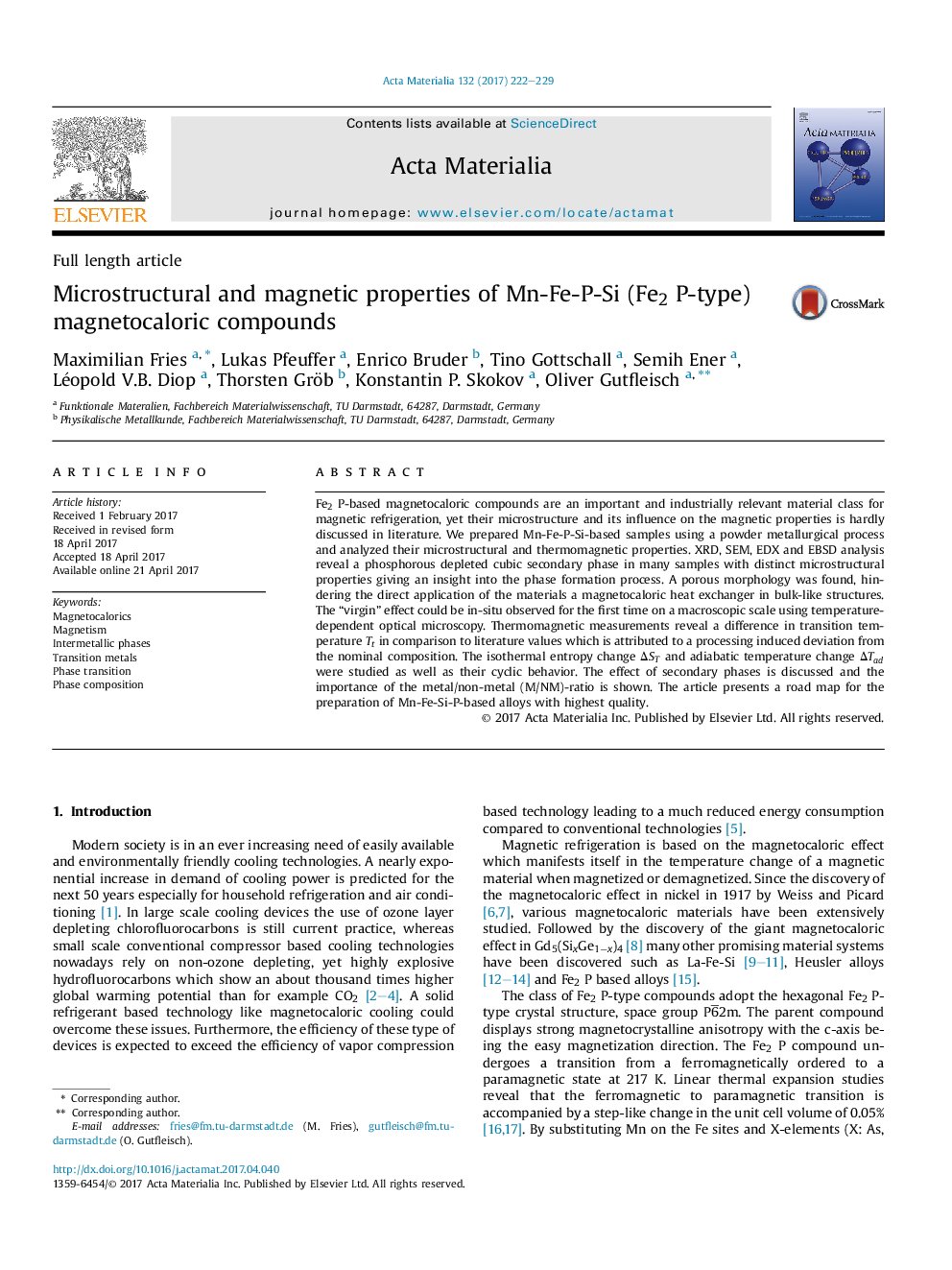| Article ID | Journal | Published Year | Pages | File Type |
|---|---|---|---|---|
| 5436158 | Acta Materialia | 2017 | 8 Pages |
Fe2 P-based magnetocaloric compounds are an important and industrially relevant material class for magnetic refrigeration, yet their microstructure and its influence on the magnetic properties is hardly discussed in literature. We prepared Mn-Fe-P-Si-based samples using a powder metallurgical process and analyzed their microstructural and thermomagnetic properties. XRD, SEM, EDX and EBSD analysis reveal a phosphorous depleted cubic secondary phase in many samples with distinct microstructural properties giving an insight into the phase formation process. A porous morphology was found, hindering the direct application of the materials a magnetocaloric heat exchanger in bulk-like structures. The “virgin” effect could be in-situ observed for the first time on a macroscopic scale using temperature-dependent optical microscopy. Thermomagnetic measurements reveal a difference in transition temperature Tt in comparison to literature values which is attributed to a processing induced deviation from the nominal composition. The isothermal entropy change ÎST and adiabatic temperature change ÎTad were studied as well as their cyclic behavior. The effect of secondary phases is discussed and the importance of the metal/non-metal (M/NM)-ratio is shown. The article presents a road map for the preparation of Mn-Fe-Si-P-based alloys with highest quality.
Graphical abstractDownload high-res image (218KB)Download full-size image
